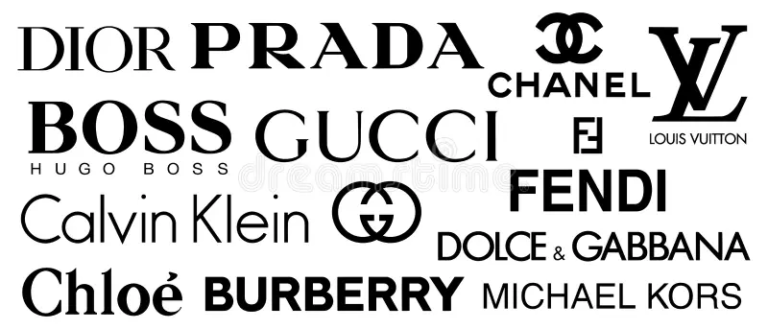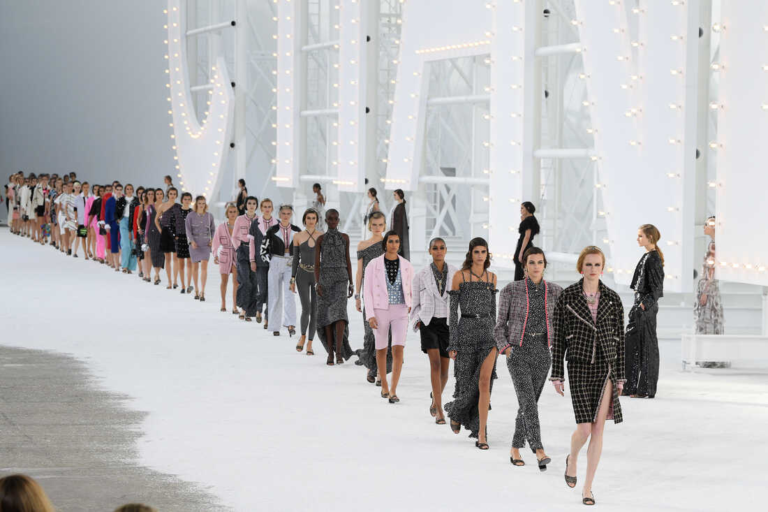Established as the epitome of luxury fashion, Gucci’s evolution from its inception in Florence to become a global fashion powerhouse is both intriguing and awe-inspiring. This chronicle dives deep into Gucci’s origins, innovations, challenges, and its ever-evolving face in the world of luxury fashion.
The Humble Beginnings
Guccio Gucci’s immersion into the opulent world during his tenure at London’s Savoy Hotel gave him the vision and understanding of luxury. His move to Florence, and the establishment of the very first Gucci store, was not just the birth of a brand but the genesis of a luxury empire. With their dedication to craftsmanship and his family’s unwavering support, Gucci began its journey toward international acclaim.
Gucci’s Signature Styles and Materials
Facing challenges such as material constraints and global embargoes, Gucci showcased its innovative spirit by adopting alternative materials. This era witnessed the introduction of distinctive patterns and styles, with the diamond print being the hallmark of Gucci’s creativity.
Expansion and the American Dream
As Gucci’s fame spread across the Atlantic, the brand established itself as an icon of affluence and elegance in America. With stores opening in elite locations, including New York’s Savoy Plaza Hotel, Gucci’s footprint in the realm of luxury fashion was irrefutably solidified.
The Gucci Legacy and Innovations
Post the demise of its founder, Gucci continued to innovate with iconic products like the horse-bit loafer and the Horsebit bag, emphasizing their equestrian roots and passion for impeccable design.
Celebrity Influence and the House’s Modern Appeal
From Jacqueline Kennedy to Harry Styles, Gucci has always been the preferred choice for celebrities. This section delves into how celebrities’ endorsements have shaped Gucci’s brand image and its widespread recognition.
Gucci’s Corporate Battles and Alliances
The tale of Gucci is also one of corporate intrigue, with powerhouses like LVMH and PPR vying for its control. This chapter delves into these corporate battles and the eventual acquisition by PPR, marking a new era for the brand.
Creative Leadership: The Transition Through Decades
From Tom Ford’s sensual collections to Alessandro Michele’s eccentric designs, this section celebrates the designers who have shaped and reshaped the Gucci narrative over the decades.
Comparison Table
| Aspect | Gucci | Other Luxury Brands | Insights |
|---|---|---|---|
| Origin | Florence, Italy | Varies | Gucci’s rich Italian heritage plays a significant role in its designs and brand ethos. |
| Signature Material | Leather, Canapa, Bamboo | Varies | While many brands use leather, Gucci’s iconic use of bamboo, especially in handles, sets them apart. |
| Celebrity Endorsements | Numerous (from Jacqueline Kennedy to Harry Styles) | Varies | Celebrities have always been an essential part of Gucci’s brand strategy, giving them an edge in public relations. |
| Iconic Products | Horse-bit loafer, Bamboo bag | Varies | Gucci’s signature products, stemming from its equestrian roots, offer a unique brand recall. |
| First Store Location | Florence | Varies | Gucci’s inception in the heart of Italy showcases its deep-rooted connection to Italian craftsmanship. |
| Fashion Shows | Regular appearances in Milan Fashion Week | Varies | Gucci’s presentations in fashion weeks have always been trendsetters, dictating global luxury fashion tones. |
| Sustainability Initiatives | Gucci Equilibrium | Varies | With the introduction of Gucci Equilibrium, the brand has emphasized its commitment to sustainability and responsible fashion. |
Interesting Facts
Origins and Foundation:
- Founded in 1921 by Guccio Gucci in Florence;
- Inspiration was drawn from his time in London’s luxurious hotels;
- The emphasis on Italian craftsmanship from the very start.
- Material Innovations:
- Despite World War II constraints, Gucci showcased adaptability by using unconventional materials;
- The bamboo handle, born out of resource scarcity, became an iconic design element.
Global Expansion:
- A deliberate and well-executed strategy to enter the American market in the mid-20th century;
- Expansion across Europe, Asia, and the Middle East followed suit, making Gucci a global name.
Celebrity Collaborations and Endorsements:
- Gucci’s association with Hollywood dates back to the 60s with stars like Audrey Hepburn and Grace Kelly;
- Modern-day collaborations include celebrities from various domains, such as music, movies, and even royalty.
Design Evolution:
- Transition from classic designs to bold and eclectic styles;
- Each creative director, from Tom Ford to Alessandro Michele, has left a distinctive mark on the brand.
Corporate Dynamics:
- The brand witnessed intense corporate battles in the 80s and 90s;
- Its eventual merger with Pinault-Printemps-Redoute (now Kering) marked a significant turning point.
Focus on Sustainability:
- Introduction of eco-friendly lines and a commitment to reduce environmental impact;
- Gucci Equilibrium – a commitment to create a balance between aesthetics and responsibility.
The expanded bullet points provide a more detailed breakdown of Gucci’s evolution, capturing essential milestones and highlighting the brand’s adaptability and resilience in the ever-evolving world of luxury fashion.
Video Guide
If you still have questions, we suggest you watch the video we have prepared for you. Enjoy watching it!
Sustainability and Gucci: An Unwavering Commitment
Over the past decade, the luxury fashion industry has witnessed a significant shift in its approach to sustainability. Among the leading brands advocating for responsible fashion, Gucci stands out for its proactive measures and transparent practices. Their commitment to sustainability goes beyond mere statements; it is ingrained in their business model, influencing every decision from sourcing materials to retail practices.
Gucci Equilibrium Initiative
Launched in 2018, the Gucci Equilibrium initiative seeks to balance the house’s desire to create beautiful, luxury items with their commitment to provide for the planet and its inhabitants. This holistic strategy touches on areas including responsible sourcing, waste reduction, and community engagement.
Key Highlights:
- Carbon Neutral Strategy: Gucci committed to becoming carbon-neutral in its entire supply chain, significantly reducing its greenhouse gas emissions. The remaining emissions are offset through projects that support reforestation and biodiversity;
- Leather and Material Sourcing: The brand ensures that 95% of its leather is sustainably sourced. Gucci also pioneers the use of regenerated materials, such as ECONYL®, a type of nylon produced from recycled waste materials;
- Water Stewardship: By implementing the Green Carpet Challenge (GCC), Gucci focuses on reducing its water footprint, committing to a 50% reduction in its water consumption by 2025;
- Community Engagement: Gucci’s “Chime for Change” campaign aims to empower women and girls globally, addressing issues such as education, health, and justice.
The Future of Sustainable Luxury
Gucci’s initiatives set a powerful precedent for other luxury brands, emphasizing that opulence and responsibility can coexist harmoniously. The brand’s dedicated approach showcases how luxury and sustainability are not only compatible but can enhance each other when integrated authentically.
In an era where consumers are becoming increasingly conscious of the environmental and societal impacts of their purchases, brands that prioritize sustainability, much like Gucci, will not only lead in ethics but also in market relevance.
Conclusion
The realm of luxury fashion is intricate, vast, and continually evolving. Brands like Gucci, with their century-long legacies, have not just observed but actively shaped this evolution. From its humble origins in Florence to its global stature today, Gucci embodies the confluence of heritage and innovation. Its adaptability, be it through resource constraints during wartime or the rapidly changing fashion landscape, showcases a brand resilience that few can match.
The brand’s fusion of traditional Italian craftsmanship with modern design elements has made it an enduring symbol in the luxury market. By leveraging celebrity endorsements, from Hollywood legends of yore to modern-day icons, Gucci has seamlessly integrated its offerings into global pop culture. This connection has been further solidified by the brand’s distinct voice in sustainability and responsibility, setting a precedent for the industry.
Gucci’s journey, punctuated by challenges, reinventions, and milestones, serves as a testament to the dynamism of the luxury industry. Its legacy is a compelling narrative of vision, innovation, and an unwavering commitment to excellence. As we look ahead, one thing remains clear: brands that can marry tradition with contemporary relevance, much like Gucci, will continue to define the future of luxury fashion.








+ There are no comments
Add yours